#climate art
Text

Beautiful artwork. I love architecture that incorporates many elements, here we can see water, greenery, air and stone. In the ideal world architecture will be more life giving to both those who occupy them and to the planet. credit Jacek Yerka
#solarpunk#clifi#climate optimism#climate positive#sustainable design#environmental design#climate art
239 notes
·
View notes
Photo
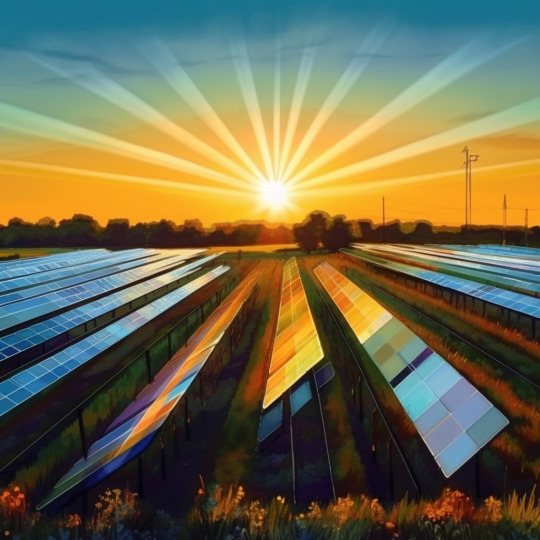


Envision Our Energizing-Vibrant Renewable Future Now
#earth day#earth month#renewable energy#renewable power#ai art#ai#image generation#design#climate art#renewable electricity#power sources#vibrant skies#solar power#solar#wind#wind energy#green future#solarpunk#renewables#midjourney#imagination#image building
248 notes
·
View notes
Text
The Climate Movement Needs Your Creativity, Not Your Guilt
(This is an annotated transcript of the TEDx talk I gave in April 2023. It’s 10 minutes long. I’d suggest watching it first and then coming here for supporting materials.)
youtube
Does climate action feel impossible?
When I was a kid, I was interested in everything. I’d need about 10 careers to do it all. So I got out my green and blue markers and made a calendar to keep track of which job I’d have on which day of the week. On Monday, I’d be a scientist, on Tuesday, a painter. Friday — some kind of explorer, because I loved nature documentaries. I related to how animals seemed fascinated by whatever was right in front of them.
Every documentary ended with a reminder that these animals needed our help, and all the ways they were threatened by human activity. I couldn’t believe no one had managed to do something about this. But I figured I would know how when I grew up.
So, though I kept changing my mind about what I would be, the one constant was that it would have something to do with climate and conservation.
Years later, I was working as an engineer and plugging away at my art and writing. I didn’t tell anyone about my master plan to connect it all to climate, but I hadn’t forgotten it. I kept looking for ways to make my engineering work overlap with climate science or renewables.
Still, I avoided climate news. I didn’t need to hear over and over that climate change REALLY WAS real to motivate me to take action. I didn’t need to see a picture of an animal choking on plastic; I already had the master plan. Meanwhile, I kept circling climate action from a distance without taking the plunge.
But that changed in 2020. The United Nations issued a report giving us a deadline of 2030 to make steep emissions cuts.
Taking action couldn’t stay theoretical and future tense any longer. So I dove into the research to catch up on what I had missed. And I started — tentatively — talking to people about climate change and my intentions.
And I got wave after wave of bad news. It wasn’t just the tight deadlines, scale of changes needed, and years of deadlock.
It was also the confusing responses I was getting in my conversations about climate change. I’d bring up something I found fascinating, people’s faces would drop. The’d say “Yeah… I should be doing more.” And the conversation stopped there.
We’d all finally grown up! and I was ready to jump into the master plan, but I hadn’t factored in when I was 10 that no one would want to jump with me.
And it was 2020, and the air in California was full of wildfire smoke — a constant reminder of what was at stake.
Defeatism had hijacked the climate conversation and it was everywhere.
Eventually, the gloom shifted just enough for me to start wondering. Maybe we were all so bummed because we couldn’t see through the haze. We’ve all been peppered with directives — reduce, reuse, recycle. Drive less. Fly less. Turn off lights. Don’t buy plastic.
And we try, pushing against a system that wasn’t set up for any of that. But we don’t have a clear picture of how this helps.
We may have a vague idea of our individual reductions adding up to collective reductions — but then, every single one of us would have to cut our individual emissions by over half, and then to zero. We can’t imagine the effort it would take to scale up our reductions by that much. And convincing every single human to do the same? Impossible.
This picture doesn’t add up because it requires us all to be perfect. And worse, it makes us feel like we are failing, every single day.
But let me paint you a different picture. If change could only happen with 100% participation and perfection, change would never happen. But I think we can all agree that sometimes change does happen, even positive change. So — how?
For one thing, you can move society in a positive direction without being perfect. Think of it like electric current. We are the electrons.
When we imagine current flowing through a wire, we might imagine an orderly stream of electrons all moving in the same direction.

But actually, even before the current starts, the electrons are moving — randomly, at high speeds, in all directions.

And when we apply a voltage to create current, it still looks like they’re moving at random, except there’s a change you can only see when you look at the wire as a whole.

Each electron shifts its velocity a tiny bit, all in the same direction. You don’t need perfect electrons to create current.

Society is a bit more complicated than electric current. Still, it doesn’t matter that we aren’t each moving in a perfectly sustainable direction as long as our changes line up. And more importantly, pick up speed.
So what’s the voltage that directs us? I called it “the system,” and what I mean is the way all the organizations that touch our lives are set up — what they prioritize and where they get their materials.
We are constantly pushing against the system while trying to influence “our” consumption. What if we tried influencing the system instead?
So how do systems change? I found the answer in one of my math textbooks. Transformation builds under the surface as ideas brew, minds change, and small clusters of supporters gather — all while progress appears to be slow or non-existent, until suddenly, the support reaches a critical mass, and the system transforms rapidly in an emergent process.
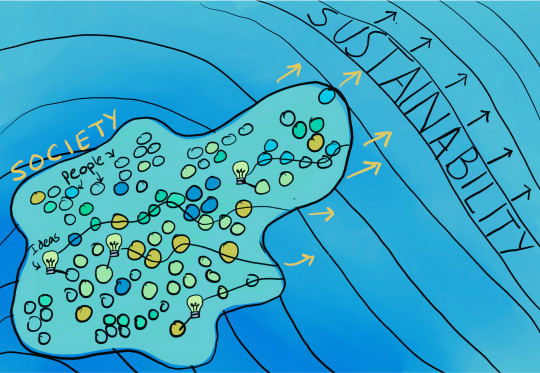
Nearly every social movement that succeeded followed this pattern of slow, then all at once. To get to that point, a certain percentage of people need to participate (estimated variously as 3.5%, to 25%), but importantly, it’s not 100%.
So don’t think of the climate movement as something you’re guilted into. You can choose to be one of the 25% who become early adopters of change.
And you don’t have to worry about the people you can’t convince. They will change when the system changes because that comes first.
Changing the system requires creativity. The first act of creativity is to imagine the possible paths to transformation.
The second act of creativity is to imagine where you can fit into that picture. Old ideas need to be replaced by new ones — about everything from technology to our day-to-day lives. The new ideas spread through you.
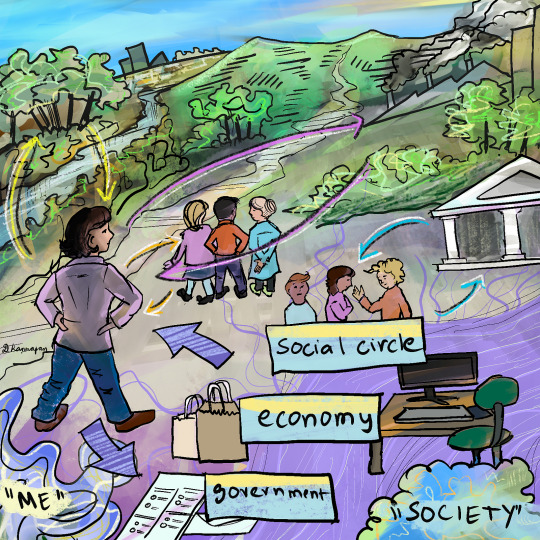
To make that happen, ask yourself these three questions.
One. What is a movement you want to throw your weight behind? Pick a trend or organization that’s already building, and that you can help accelerate. You can be another piece of its critical mass.
Two. What’s a practical obstacle that’s been keeping you from participating? Anything from not knowing what a word means, to having trouble deciding where to volunteer.
If you have this obstacle, others do too. So brainstorming a solution will help more than just you. That obstacle doesn’t stand a chance against your formidable skills at creative problem solving!
Question Three. What social circles that you’re already a part of, can you share your solutions and experiences with? Sharing in the circles where you can be heard is how your solutions amplify and ripple outward.
We’re facing unprecedented challenges, so our imaginations need to be nimble — zipping like a hummingbird — from the big picture, to our immediate surroundings. From where we’re starting from — to where we want to get to.
We can’t be nimble like this if we’re stuck in guilt and perfectionism, and gazing endlessly within our own homes and wallets at all the things we’re doing wrong.
No movement in history has been made up of perfect people, so stop worrying about the ways you’re not perfect. Perfect people are not required.
Instead, think of all the ways your creativity could accelerate us in the right direction.
If you haven’t already, check out the recording of my TEDx talk! And you can hit ‘like’ on the video if you want to help get the YouTube algorithm to distribute it.
#climate change#climate art#climate activism#environmental activism#environmentalism#environment art#solarpunk#hopepunk#hopeposting#activism#pep talk#tedx talks#climate action#climate and environment#social change#environmental justice#collective consciousness#long post#take action#Youtube
86 notes
·
View notes
Text

conversation with a friend
#junos.art#art#original art#art journal#artists on tumblr#drawing#art journaling#sketchbook page#climate#climate anxiety#climate grief#climate art#climate crisis
9 notes
·
View notes
Text
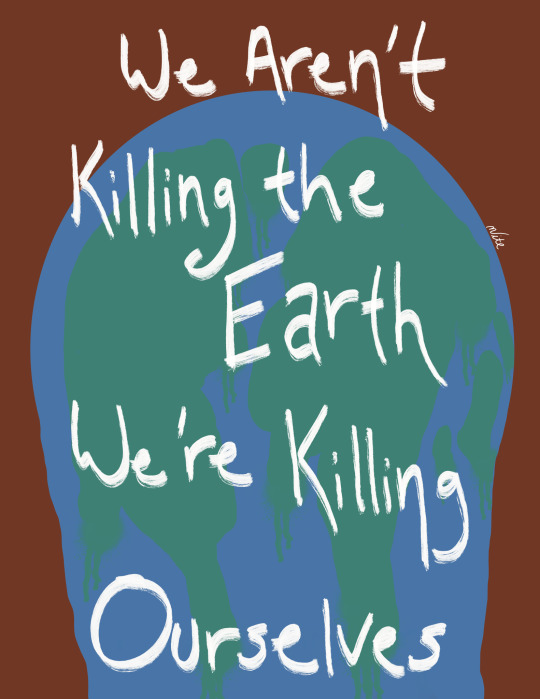
We’re fighting for ourselves.
#digital art#lgbtq artists#artwork#spiritualawakening#spiritualart#climate change#climate art#climate justice#climate emergency#environmetalists#print#artists on tumblr
2 notes
·
View notes
Text

#climate art#climate change#pollution#collage#collage art#nature#eco art#climate design#digital art#design
3 notes
·
View notes
Text

Click through for the Regenerative Climate Storytelling guide for artist guidance, produced in collaboration with trubel&co!
----------------------------------------------------------------------------
We invite passionate creators to submit their multimedia proposals for this anthology series, dedicated to exploring the complexities of climate change and the potential for transformative action through an optimistic lens.
Scroll storytelling-2075.tumblr.com for more details and resources!
Submit your proposal here.
#climate storytelling#regenerative#climate#call for proposals#call for artists#climate art#multimedia art#textile art
1 note
·
View note
Text

Helping the Earth.
14K notes
·
View notes
Text


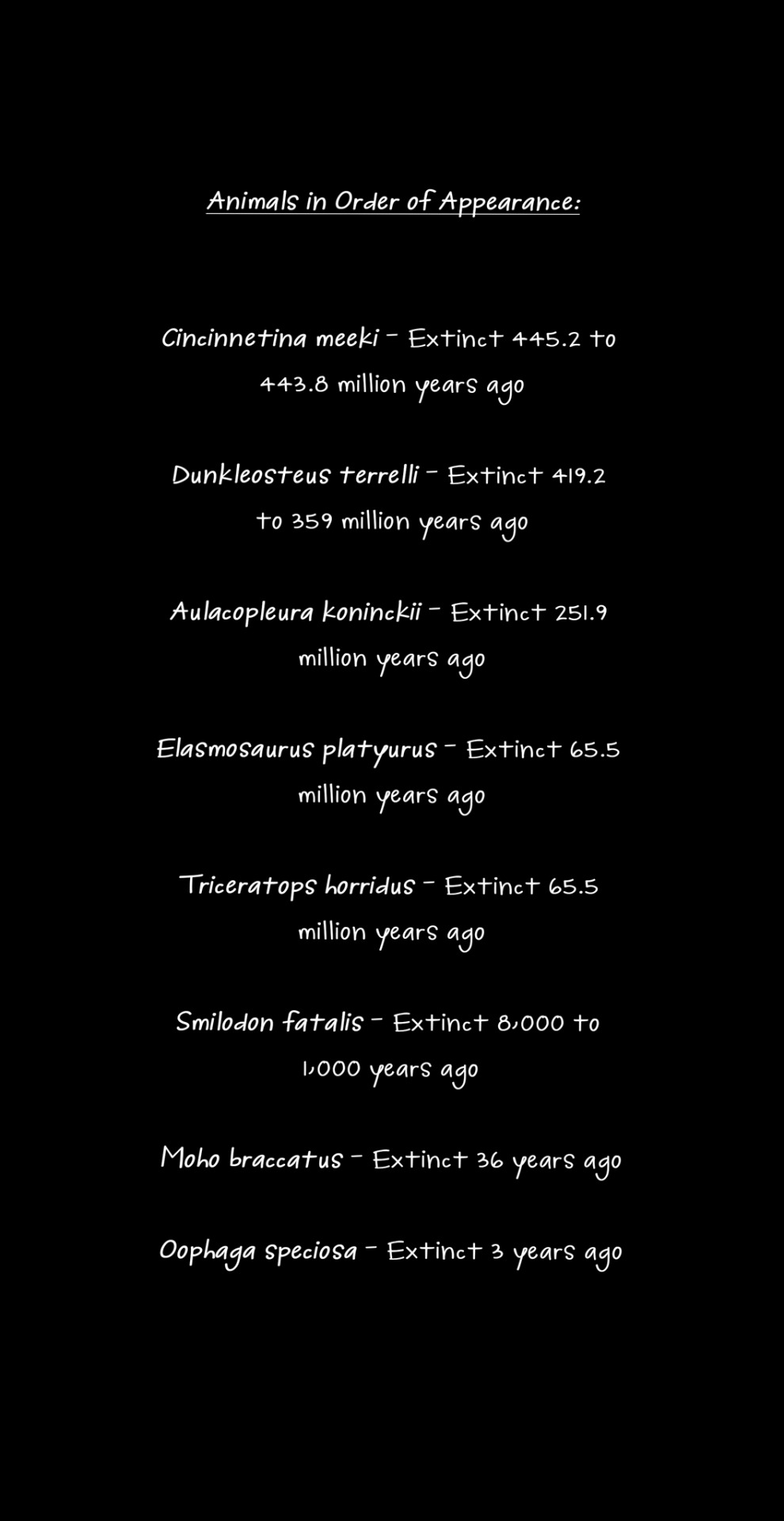

text from porter robinson's "goodbye to a world"
every single animal in this comic is extinct. it's not too late for the ones that are left.
edit: thanks @mudcrabmassacre for the correction, smilodon fatalis did not in fact go extinct in 1023 AD. the actual prediction is around 10,000 years ago - I think i may have missed a zero or two.
#comic#art#environment#conservation#animals#extinct species#fossils#climate change#dinosaurs#ancient life#endangered species#endangered animals#comics#artists on tumblr#digital art#digital comic#my-art
10K notes
·
View notes
Text
there's something deeply gutting about being a writer right now. watching studio execs brag about starving people like you out of your very house just to not pay you anything above the pennies you currently make. watching some people cheer over AO3 being targeted for a DDOS attack. the complete lack of profitability of writing commissions or writing in general in transformative spaces, especially in contrast to fanart. the pivot of so many social media platforms to be video and image based near-exclusively.
I don't know. it just makes me sad to know that the hobby that kept me alive while growing up homeschooled with dial-up internet and local antenna TV... is only ever gonna be a side job with minimal engagement. I know this site is good about supporting libraries and the concept of books but, do me a favor? Reach out to a writer friend you know. Leave a comment on your last five read stories on your favorite website.
Tell us you care.
#maybe that's why I've been so stalled on my novel#I keep trying to convince myself there's a POINT to it#but I look at how BRUTAL the publishing industry is and how I can't even consistently break ten reblogs on writing I post here#and I just. it hurts. and I have other hobbies I could fall back on!!! I could do art and cosplay and cater to the immediate engagement!!#but writing is my LOVE and my PASSION and I just wish. I wish the current climate CARED about us#TALKED to us the way we talk to cosplayers and artists and the chocolate guy#UGH. Wednesday blues hitting me NASTY today
6K notes
·
View notes
Photo
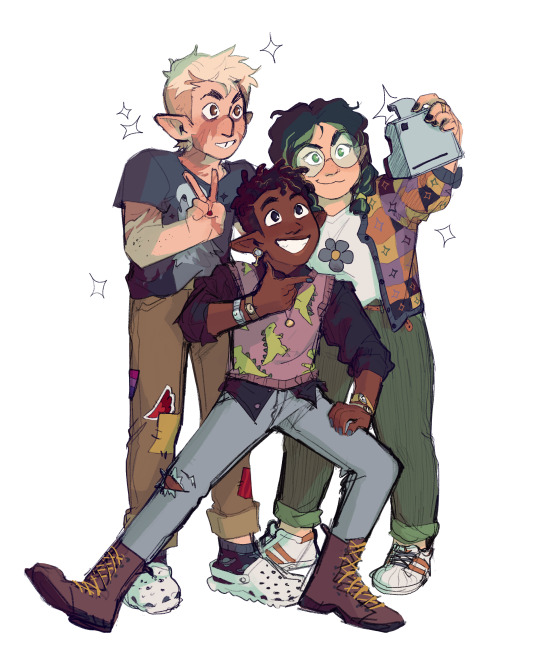
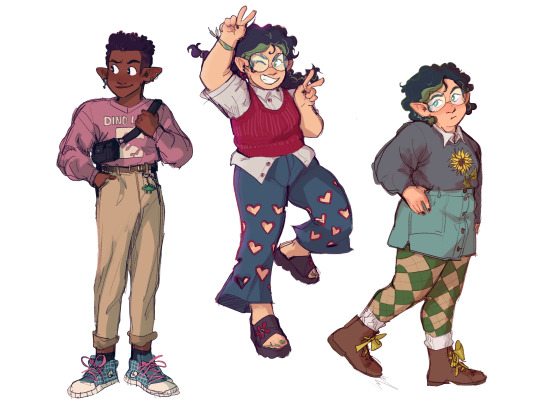
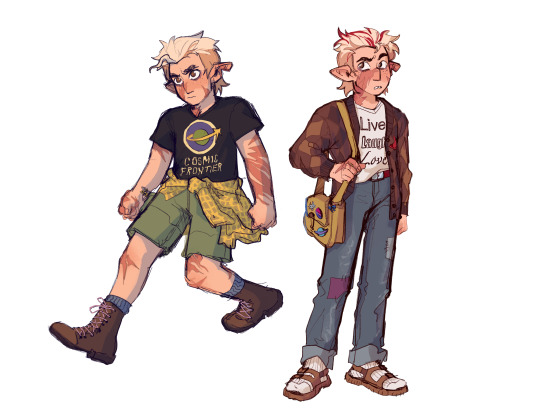
outfits
#anti-climatic for today but i HAD to get these out before their designs become outdated kxjsjks#the owl house#toh art#toh#hunter toh#toh hunter#hunter noceda#willow park#gus porter#augustus porter#willow#hunter#gus#hunter wittebane#emerald trio#my art#fanart
9K notes
·
View notes
Text

Loving this print from etsy seller Meolashop. Simple yet evocative imagery.
4 notes
·
View notes
Text
“The whole sky is yours”

How good to rise in sunlight,
in the prodigal smell of biscuits -
eggs and sausage on the grill.
The whole sky is yours
to write on, blown open
to a blank page.
— Rita Dove, Dawn Revisited

Envision Our Energizing-Vibrant Renewable Future Now

See More Beautiful Renewable Dawns
#solarpunk#wind#solar#wind power#solar power#wildflowers#flower power#vibrant skies#vibrant sky#ai#ai image#Midjourney#solar farm#community solar#solar energy#solar electricity#solar field#solar meadow#climate art#solar art#clean energy#renewable energy#sunrise#dawn#art#environment#earth month#windfarm#beautiful renewables#renewable power
101 notes
·
View notes
Text

I’m always trying to encourage people to notice the ways they are connected to and can influence… everything. (In small ways, which is fine! You are one person. Be one person.)
#artists on tumblr#art#digital art#artwork#illustration#my art#digital illustration#conceptual#climate art#hopepunk#environmental activism#art challenge Dec 2022#procreate
3 notes
·
View notes
Text
NASA Inspires Your Crafty Creations for World Embroidery Day
It’s amazing what you can do with a little needle and thread! For #WorldEmbroideryDay, we asked what NASA imagery inspired you. You responded with a variety of embroidered creations, highlighting our different areas of study.
Here’s what we found:
Webb’s Carina Nebula
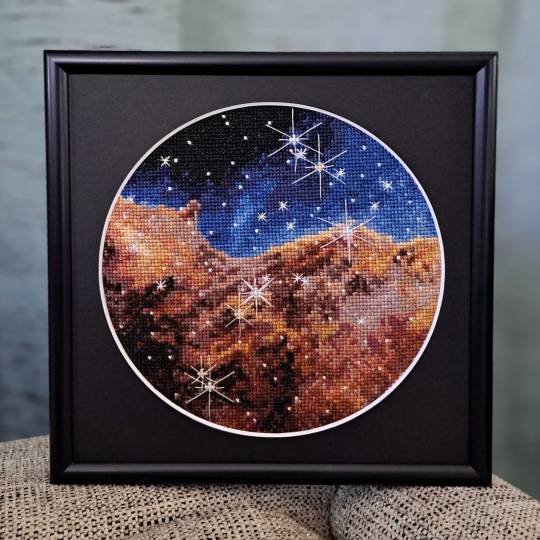
Wendy Edwards, a project coordinator with Earth Science Data Systems at NASA, created this embroidered piece inspired by Webb’s Carina Nebula image. Captured in infrared light, this image revealed for the first time previously invisible areas of star birth. Credit: Wendy Edwards, NASA. Pattern credit: Clare Bray, Climbing Goat Designs
Wendy Edwards, a project coordinator with Earth Science Data Systems at NASA, first learned cross stitch in middle school where she had to pick rotating electives and cross stitch/embroidery was one of the options. “When I look up to the stars and think about how incredibly, incomprehensibly big it is out there in the universe, I’m reminded that the universe isn’t ‘out there’ at all. We’re in it,” she said. Her latest piece focused on Webb’s image release of the Carina Nebula. The image showcased the telescope’s ability to peer through cosmic dust, shedding new light on how stars form.
Ocean Color Imagery: Exploring the North Caspian Sea
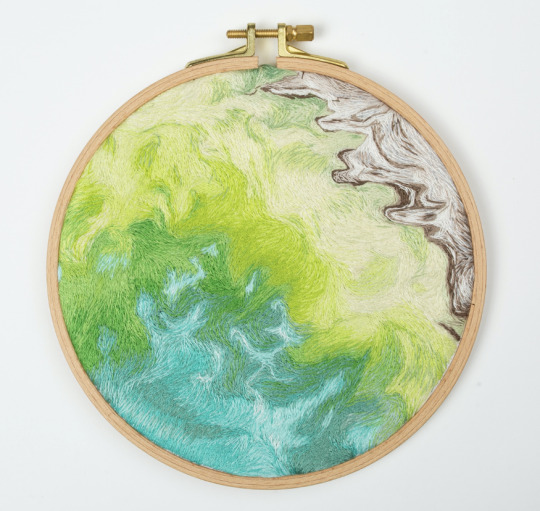
Danielle Currie of Satellite Stitches created a piece inspired by the Caspian Sea, taken by NASA’s ocean color satellites. Credit: Danielle Currie/Satellite Stitches
Danielle Currie is an environmental professional who resides in New Brunswick, Canada. She began embroidering at the beginning of the Covid-19 pandemic as a hobby to take her mind off the stress of the unknown. Danielle’s piece is titled “46.69, 50.43,” named after the coordinates of the area of the northern Caspian Sea captured by LandSat8 in 2019.

An image of the Caspian Sea captured by Landsat 8 in 2019. Credit: NASA
Two Hubble Images of the Pillars of Creation, 1995 and 2015
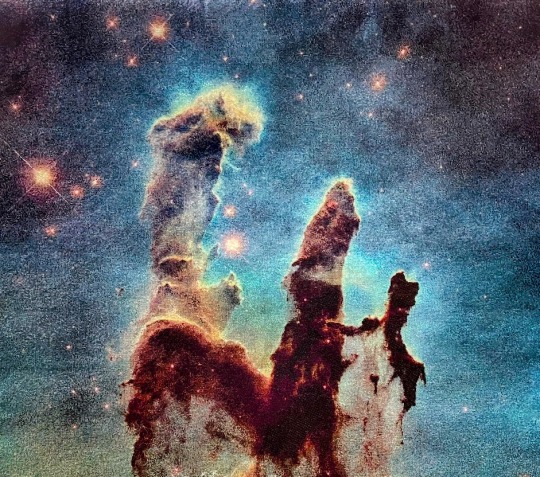
Melissa Cole of Star Stuff Stitching created an embroidery piece based on the Hubble image Pillars of Creation released in 1995. Credit: Melissa Cole, Star Stuff Stitching
Melissa Cole is an award-winning fiber artist from Philadelphia, PA, USA, inspired by the beauty and vastness of the universe. They began creating their own cross stitch patterns at 14, while living with their grandparents in rural Michigan, using colored pencils and graph paper. The Pillars of Creation (Eagle Nebula, M16), released by the Hubble Telescope in 1995 when Melissa was just 11 years old, captured the imagination of a young person in a rural, religious setting, with limited access to science education.

Lauren Wright Vartanian of the shop Neurons and Nebulas created this piece inspired by the Hubble Space Telescope’s 2015 25th anniversary re-capture of the Pillars of Creation. Credit: Lauren Wright Vartanian, Neurons and Nebulas
Lauren Wright Vartanian of Guelph, Ontario Canada considers herself a huge space nerd. She’s a multidisciplinary artist who took up hand sewing after the birth of her daughter. She’s currently working on the illustrations for a science themed alphabet book, made entirely out of textile art. It is being published by Firefly Books and comes out in the fall of 2024. Lauren said she was enamored by the original Pillars image released by Hubble in 1995. When Hubble released a higher resolution capture in 2015, she fell in love even further! This is her tribute to those well-known images.
James Webb Telescope Captures Pillars of Creation

Darci Lenker of Darci Lenker Art, created a rectangular version of Webb’s Pillars of Creation. Credit: Darci Lenker of Darci Lenker Art
Darci Lenker of Norman, Oklahoma started embroidery in college more than 20 years ago, but mainly only used it as an embellishment for her other fiber works. In 2015, she started a daily embroidery project where she planned to do one one-inch circle of embroidery every day for a year. She did a collection of miniature thread painted galaxies and nebulas for Science Museum Oklahoma in 2019. Lenker said she had previously embroidered the Hubble Telescope’s image of Pillars of Creation and was excited to see the new Webb Telescope image of the same thing. Lenker could not wait to stitch the same piece with bolder, more vivid colors.
Milky Way

Darci Lenker of Darci Lenker Art was inspired by NASA’s imaging of the Milky Way Galaxy. Credit: Darci Lenker
In this piece, Lenker became inspired by the Milky Way Galaxy, which is organized into spiral arms of giant stars that illuminate interstellar gas and dust. The Sun is in a finger called the Orion Spur.
The Cosmic Microwave Background
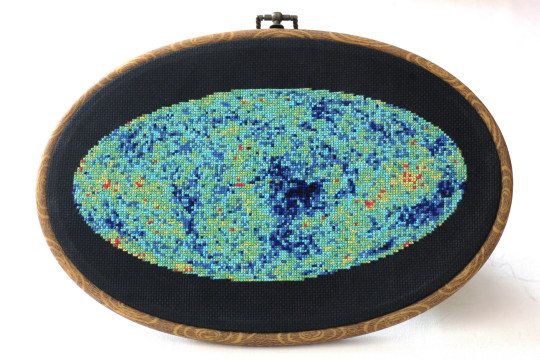
This image shows an embroidery design based on the cosmic microwave background, created by Jessica Campbell, who runs Astrostitches. Inside a tan wooden frame, a colorful oval is stitched onto a black background in shades of blue, green, yellow, and a little bit of red. Credit: Jessica Campbell/ Astrostitches
Jessica Campbell obtained her PhD in astrophysics from the University of Toronto studying interstellar dust and magnetic fields in the Milky Way Galaxy. Jessica promptly taught herself how to cross-stitch in March 2020 and has since enjoyed turning astronomical observations into realistic cross-stitches. Her piece was inspired by the cosmic microwave background, which displays the oldest light in the universe.

The full-sky image of the temperature fluctuations (shown as color differences) in the cosmic microwave background, made from nine years of WMAP observations. These are the seeds of galaxies, from a time when the universe was under 400,000 years old. Credit: NASA/WMAP Science Team
GISSTEMP: NASA’s Yearly Temperature Release

Katy Mersmann, a NASA social media specialist, created this embroidered piece based on NASA’s Goddard Institute for Space Studies (GISS) global annual temperature record. Earth’s average surface temperature in 2020 tied with 2016 as the warmest year on record. Credit: Katy Mersmann, NASA
Katy Mersmann is a social media specialist at NASA’s Goddard Space Flight Center in Greenbelt, Md. She started embroidering when she was in graduate school. Many of her pieces are inspired by her work as a communicator. With climate data in particular, she was inspired by the researchers who are doing the work to understand how the planet is changing. The GISTEMP piece above is based on a data visualization of 2020 global temperature anomalies, still currently tied for the warmest year on record.
In addition to embroidery, NASA continues to inspire art in all forms. Check out other creative takes with Landsat Crafts and the James Webb Space telescope public art gallery.
Make sure to follow us on Tumblr for your regular dose of space!
#NASA#creativity#fiber art#embroidery#art#art challenge#needlework#crafts#handmade#textile art#cross stitch#stitching#inspiration#inspo#Earth#Earth science#Hubble#James Webb Space Telescope#climate change#water#nebula#stars
6K notes
·
View notes
Text

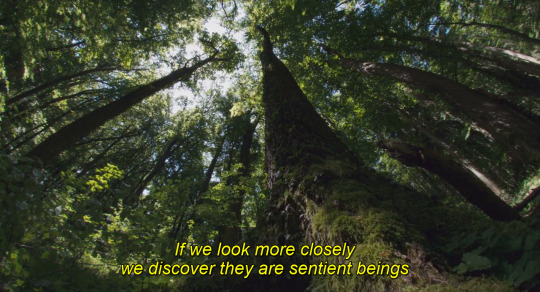
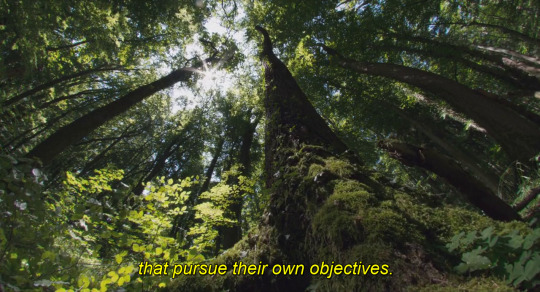
The Hidden Life of Trees, (2020)
#its a fascinating documentary i watched today and it was a good watch#movie scenes#good movie#movie quotes#movie stills#movie aesthetic#movie art#movies#documentary#trees and forests#trees#forest#climate change#climate crisis#global warming#green aesthetic#green#landscape#cinema#cinematography#nature#plants
2K notes
·
View notes